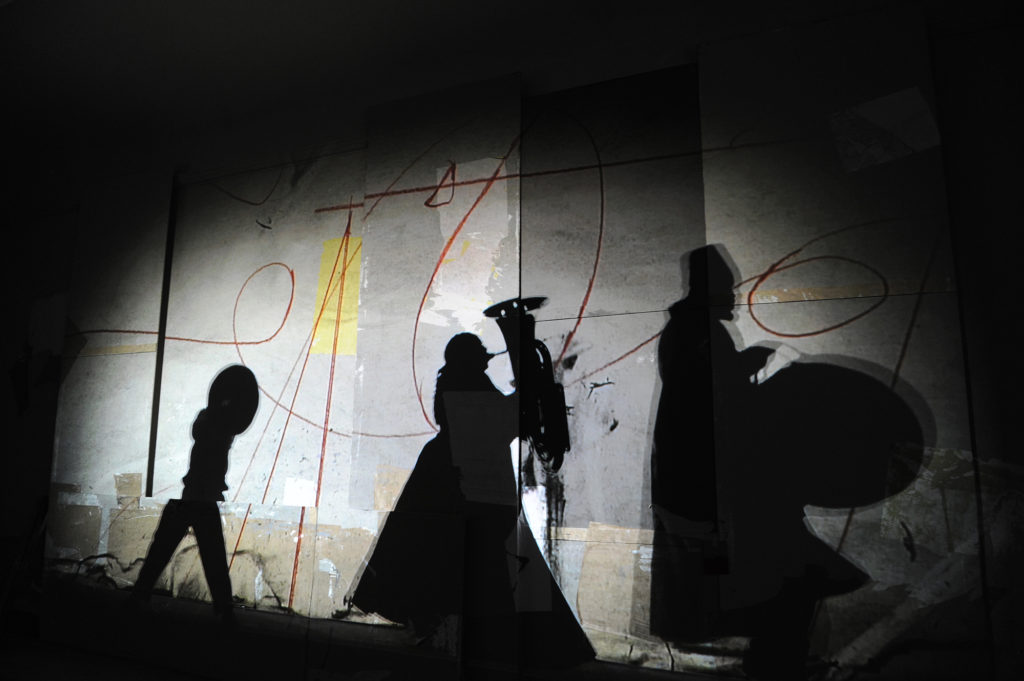William Kentridge uses magical, seductive imagery to probe often painful histories of colonialism and globalisation, drawing on his own experiences of apartheid and post-apartheid South Africa. The Johannesburg-based artist makes animated films, drawings, sculptures, and tapestries, as well as theatre and opera productions.
The Refusal of Time (2012) developed out of a series of discussions between the artist and science historian Peter Galison, about the history of the control of time. It was sparked by the insight that science is deeply riddled with poetic metaphors. The half-hour, five-channel video installation combines the magics of theatre, film, sculpture, drawing, music, and dance, to explore changing conceptions of time, from early understandings based on the sun and moon to Newton’s mathematically precise time, from Britain’s imperial imposition of universal time to Einstein’s insistence on subjective, malleable, relative time. Along the way, it addresses competing nationalist desires to define time in order to control geography.
Galison explains: ‘Greenwich Mean Time rolls off the tongue. It seems natural: of course Greenwich is the center. But the French understood perfectly well, for example, that who controls the zero of longitude, the zero point of time, controls something about the mapping of the world and its symbolic ownership. They wanted it somewhere else, and there were big battles.’
The Refusal of Time cross-references ways of understanding and measuring time to cinematic processes that manipulate time and to the tempos of music. The imagery includes giant ticking metronomes, bicycle wheels, the artist clambering over chairs, and a shadowy, melancholic procession of figures hauling all manner of things, including a bathtub. Hunched over, the figures move from screen to screen, eventually encircling the viewer with their baggage.
The entire installation seems to be powered by a pumping, breathing, accordion-like sculpture in the middle of the room—‘The Elephant’. It’s a nod to Dickens’s Hard Times, in which machines move ‘like an elephant in a state of melancholy madness’.
The Refusal of Time was made in collaboration with South African filmmaker Catherine Meyburgh, composer Philip Miller, and dancer Dada Masilo, for Documenta 13 (2012). Miller—who has been working with Kentridge for over a decade—is famed for synthesising diverse musical traditions, including South African folk music. Rich in menacing tuba drones, breathing sounds, early-twentieth-century songs, and the ghostly voices of shortwave numbers stations, his soundtrack is projected through looming, old-fashioned megaphones.
The Refusal of Time has been acquired by major public collections including the Metropolitan Museum of Art in New York, San Francisco Museum of Modern Art, and the Art Gallery of Western Australia in Perth (which has lent it for our show).





































